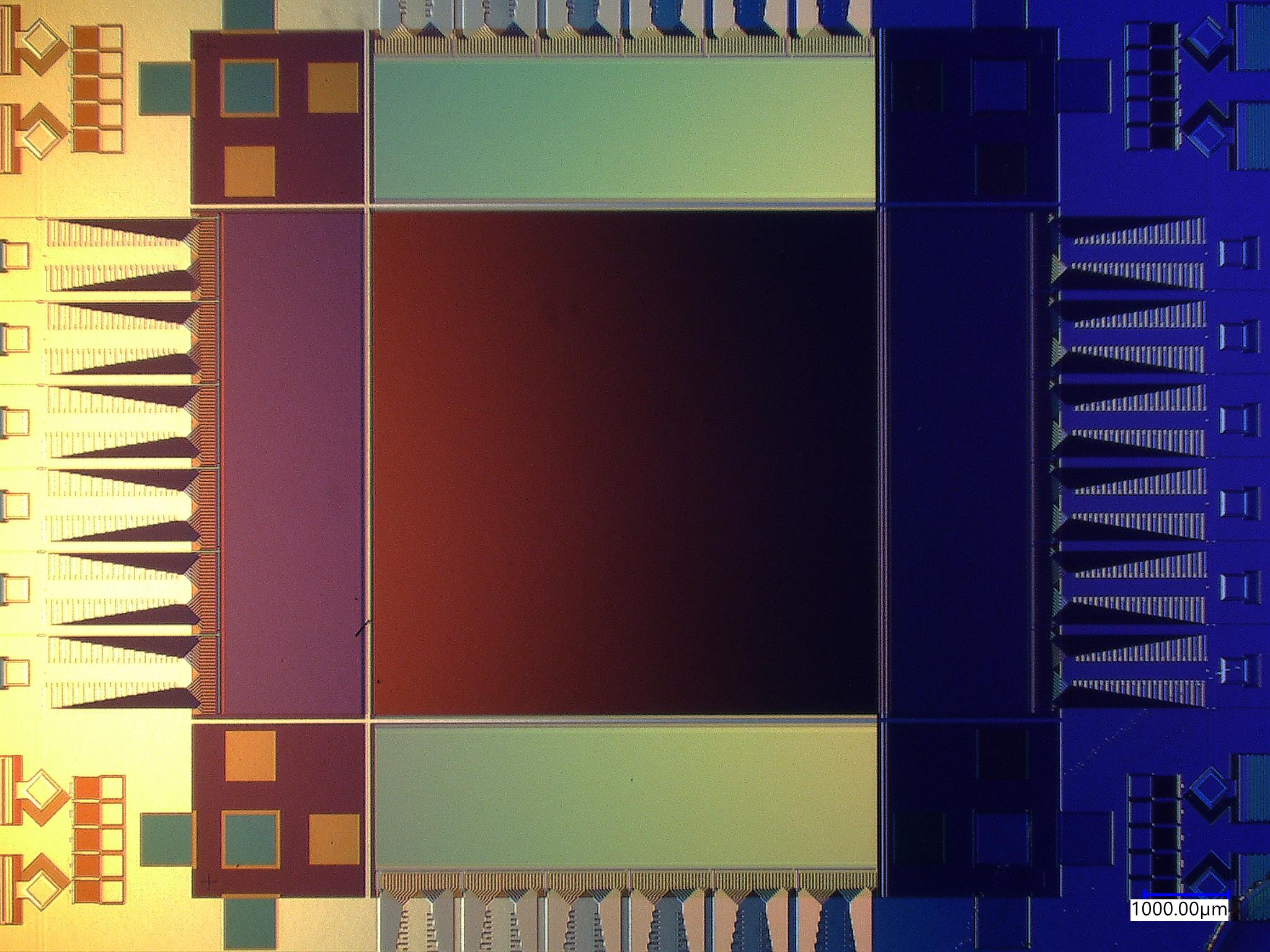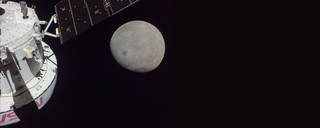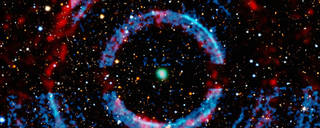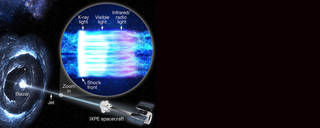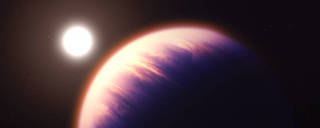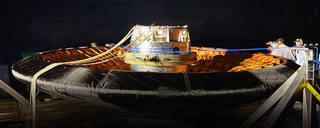A Weekly Summary of Top Content from Marshall, November 21 - November 25, 2022
Week of November 21 – November 25, 2022
Orion Completes First Lunar Flyby
On its sixth day into the Artemis I mission, Orion successfully completed its fourth orbital trajectory correction burn using the auxiliary engines Nov. 21 ahead the first of two maneuvers required to enter a distant retrograde orbit around the Moon. The first three trajectory correction burns provided an opportunity to fire all three thruster types on Orion with the first using the large orbital maneuvering system engine, the second using the small reaction control system thrusters, and the third using the medium-sized auxiliary engines.
‘Listen’ to the Light Echoes From a Black Hole
A new sonification turns “light echoes” from the black hole called V404 Cygni into sound. Located about 7,800 light-years from Earth, V404 Cygni is a system that contains a black hole, with a mass between five and 10 times the Sun’s, that is pulling material from a companion star in orbit around it.
NASA’s IXPE Helps Solve Black Hole Jet Mystery
Some of the brightest objects in the sky are called blazars. They consist of a supermassive black hole feeding off material swirling around it in a disk, which can create two powerful jets perpendicular to the disk on each side. For decades, scientists have wondered: How do particles in these jets get accelerated to such high energies?
NASA’s Webb Reveals an Exoplanet Atmosphere as Never Seen Before
NASA’s James Webb Space Telescope scored another first: a molecular and chemical profile of a distant world’s skies. While Webb and other space telescopes, including NASA’s Hubble and Spitzer, previously have revealed isolated ingredients of this broiling planet’s atmosphere, the new readings from Webb provide a full menu of atoms, molecules, and even signs of active chemistry and clouds.
LOFTID Inflatable Heat Shield Test A Success, Early Results Show
NASA’s Low-Earth Orbit Flight Test of an Inflatable Decelerator, or LOFTID, launched Nov. 10 to demonstrate inflatable heat shield technology that could be key to landing humans on Mars. In addition to achieving its primary objective of surviving the intense dynamic pressure and heating of reentry, it appears that the aft side of the heat shield – opposite LOFTID’s nose – was well protected from the reentry environment.
For more information or to learn about other happenings at NASA’s Marshall Space Flight Center, visit NASA Marshall. For past issues of the ICYMI newsletter, click here.














